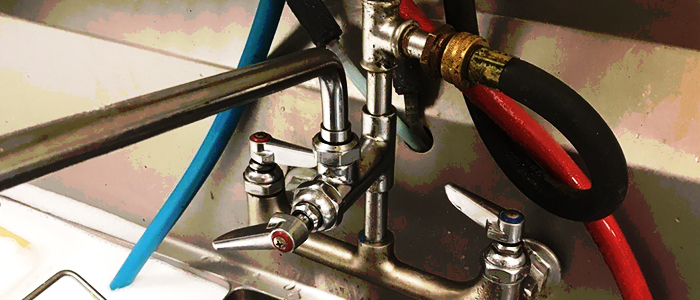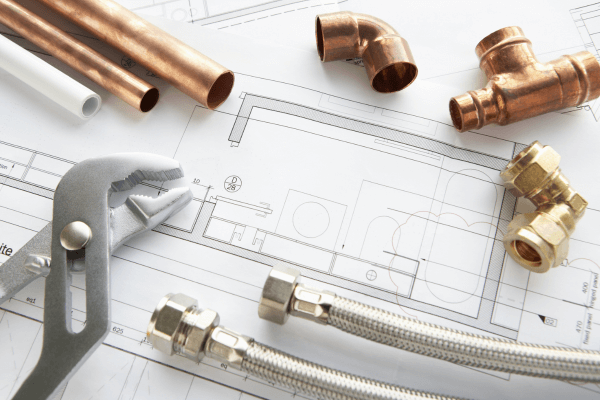The Complete Look at Your Home's Plumbing System Anatomy
The Complete Look at Your Home's Plumbing System Anatomy
Blog Article
We have come across this great article pertaining to Exploring Your Homes Plumbing Anatomy listed below on the web and think it made sense to relate it with you here.

Comprehending exactly how your home's plumbing system works is important for every home owner. From supplying tidy water for drinking, cooking, and showering to securely getting rid of wastewater, a properly maintained pipes system is vital for your household's health and wellness and comfort. In this extensive guide, we'll explore the detailed network that composes your home's pipes and offer pointers on maintenance, upgrades, and handling common concerns.
Intro
Your home's pipes system is more than just a network of pipelines; it's an intricate system that guarantees you have access to clean water and reliable wastewater elimination. Understanding its components and how they interact can assist you avoid costly repairs and make certain whatever runs smoothly.
Basic Elements of a Plumbing System
Pipes and Tubes
At the heart of your plumbing system are the pipes and tubes that bring water throughout your home. These can be made of numerous products such as copper, PVC, or PEX, each with its advantages in regards to toughness and cost-effectiveness.
Fixtures: Sinks, Toilets, Showers, and so on.
Fixtures like sinks, commodes, showers, and tubs are where water is used in your home. Understanding exactly how these fixtures link to the plumbing system aids in identifying problems and preparing upgrades.
Valves and Shut-off Factors
Valves regulate the flow of water in your pipes system. Shut-off valves are vital during emergencies or when you require to make repair services, allowing you to separate parts of the system without disrupting water flow to the whole home.
Water System
Main Water Line
The major water line links your home to the municipal water system or a private well. It's where water enters your home and is dispersed to various fixtures.
Water Meter and Stress Regulator
The water meter actions your water usage, while a stress regulator makes sure that water flows at a risk-free stress throughout your home's plumbing system, protecting against damage to pipelines and fixtures.
Cold Water vs. Hot Water Lines
Recognizing the distinction in between cold water lines, which provide water directly from the major, and hot water lines, which bring warmed water from the water heater, assists in repairing and planning for upgrades.
Drain System
Drain Pipes Pipeline and Traps
Drain pipelines lug wastewater away from sinks, showers, and bathrooms to the sewage system or sewage-disposal tank. Catches protect against sewer gases from entering your home and likewise catch debris that might create clogs.
Ventilation Pipelines
Air flow pipes allow air right into the water drainage system, preventing suction that might slow drain and create traps to empty. Appropriate air flow is crucial for maintaining the stability of your pipes system.
Relevance of Proper Drainage
Ensuring proper drain stops back-ups and water damages. Routinely cleaning drains and preserving traps can stop pricey fixings and extend the life of your plumbing system.
Water Heating Unit
Kinds Of Hot Water Heater
Hot water heater can be tankless or typical tank-style. Tankless heating systems warmth water on demand, while tanks store heated water for immediate use.
Upgrading Your Plumbing System
Reasons for Upgrading
Upgrading to water-efficient fixtures or replacing old pipes can enhance water high quality, minimize water expenses, and boost the worth of your home.
Modern Pipes Technologies and Their Advantages
Check out innovations like wise leakage detectors, water-saving bathrooms, and energy-efficient water heaters that can save money and decrease environmental impact.
Cost Considerations and ROI
Calculate the upfront prices versus lasting financial savings when thinking about plumbing upgrades. Numerous upgrades pay for themselves through reduced energy costs and less repair services.
Exactly How Water Heaters Link to the Plumbing System
Understanding how hot water heater attach to both the cold water supply and warm water distribution lines helps in diagnosing concerns like not enough warm water or leaks.
Maintenance Tips for Water Heaters
Regularly purging your hot water heater to eliminate sediment, checking the temperature level setups, and examining for leaks can expand its life-span and enhance energy performance.
Typical Pipes Concerns
Leaks and Their Causes
Leakages can happen due to aging pipelines, loose fittings, or high water stress. Dealing with leaks without delay stops water damage and mold and mildew development.
Clogs and Clogs
Blockages in drains and commodes are often brought on by flushing non-flushable items or a build-up of grease and hair. Using drain displays and being mindful of what drops your drains can prevent obstructions.
Signs of Pipes Issues to Expect
Low water stress, slow-moving drains, foul odors, or abnormally high water bills are indications of prospective pipes problems that should be attended to promptly.
Pipes Maintenance Tips
Routine Inspections and Checks
Set up annual pipes assessments to catch problems early. Look for indications of leaks, rust, or mineral buildup in faucets and showerheads.
Do It Yourself Maintenance Tasks
Straightforward tasks like cleansing faucet aerators, checking for commode leaks making use of dye tablets, or shielding exposed pipelines in cold environments can protect against major pipes issues.
When to Call an Expert Plumbing Professional
Know when a plumbing concern requires expert experience. Attempting complicated fixings without proper understanding can lead to more damage and greater repair expenses.
Tips for Reducing Water Use
Simple routines like fixing leakages promptly, taking shorter showers, and running complete tons of washing and dishes can save water and reduced your utility expenses.
Eco-Friendly Pipes Options
Think about lasting plumbing products like bamboo for floor covering, which is durable and environmentally friendly, or recycled glass for kitchen counters.
Emergency Readiness
Actions to Take During a Pipes Emergency situation
Know where your shut-off valves are located and just how to turn off the water system in case of a ruptured pipe or major leak.
Value of Having Emergency Situation Contacts Helpful
Maintain contact info for neighborhood plumbers or emergency solutions conveniently offered for fast action during a plumbing crisis.
Ecological Influence and Preservation
Water-Saving Fixtures and Home Appliances
Installing low-flow faucets, showerheads, and commodes can dramatically minimize water usage without sacrificing performance.
DIY Emergency Situation Fixes (When Relevant).
Temporary fixes like utilizing duct tape to spot a dripping pipeline or placing a bucket under a leaking faucet can lessen damages till a specialist plumber arrives.
Conclusion.
Comprehending the composition of your home's plumbing system equips you to preserve it properly, conserving money and time on fixings. By adhering to normal upkeep regimens and remaining educated concerning modern-day pipes technologies, you can ensure your plumbing system operates effectively for many years to find.
HOW YOUR PLUMBING SYSTEM WORKS
Which Pipes Do What?
Blue lines = fresh water supply entering the building Red lines = hot water supply entering the building Grey lines = pipes carrying waste away from the building and venting pipes carrying gases away from the building (through the roof) YOUR MAIN PLUMBING SYSTEMS
There are two main plumbing systems that support your home s basic plumbing needs one that brings clean water into your home, and one that sends dirty water away from your home. Connected to the toilet, bath, shower, and other faucets in your home, these two systems keep your water flowing in the right directions.
ACCESSING FRESH WATER
Fresh and clean water is brought into your home through the main water supply line . Filtered through one pipe, this water is pressured to flow into the various fixtures in your home at any given time.
This water can be sourced from a well located on your property, a pond or river (mostly cottages), or, as in most cases, from the city s municipal water treatment centre. However, it is important to note that water that is untreated, such as the water siphoned from ponds or rivers, may not be safe to drink. Personal water supplies always need to be treated for hardness and contaminants before consumed.
MUNICIPAL WATER SUPPLIES
Improve taste and odour Remove sediment Eliminate hardness Reduce chlorine COLD WATER SUPPLY VS. HOT WATER SUPPLY
Cold water flows into your home or building through the service line, which then distributes hot or cold water to your fixtures. This line is most commonly run through a central column that runs floor to floor. Hot water runs in short and straight pipes as the longer the pipeline, the more heat that will be lost in the transfer. Having shorter pipes also allows residents to access hot water more quickly.
WASTE WATER SYSTEM
Your wastewater system is divided into two parts pipes that send wastewater away from your home and venting pipes that send sewer gas away from your home. Sewage water travels through pipes that flush the water and waste towards local sewers that are operated and managed by your city or town. Most sewer systems rely on gravity to move the wastewater to where it needs to go.
The further away from your toilet or sink, the larger wastewater pipes become. This allows for waste to be disposed of from various parts of your home or business at once without pipe blockages. The angle and flow of these pipes are also essential for keeping your waste pipes clear of build up.
https://harrisplumbing.ca/how-your-home-plumbing-system-works/

I was made aware of that report about through an acquaintance on a different website. Loved our review? Please quickly share it. Let other people discover it. I thank you for reading our article about .
Additional Resources Report this page